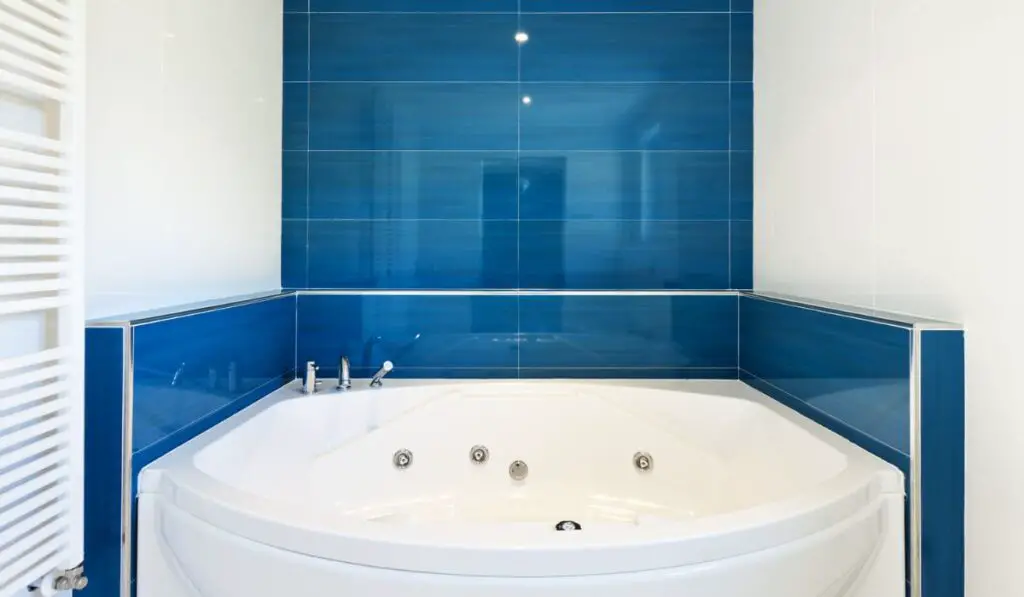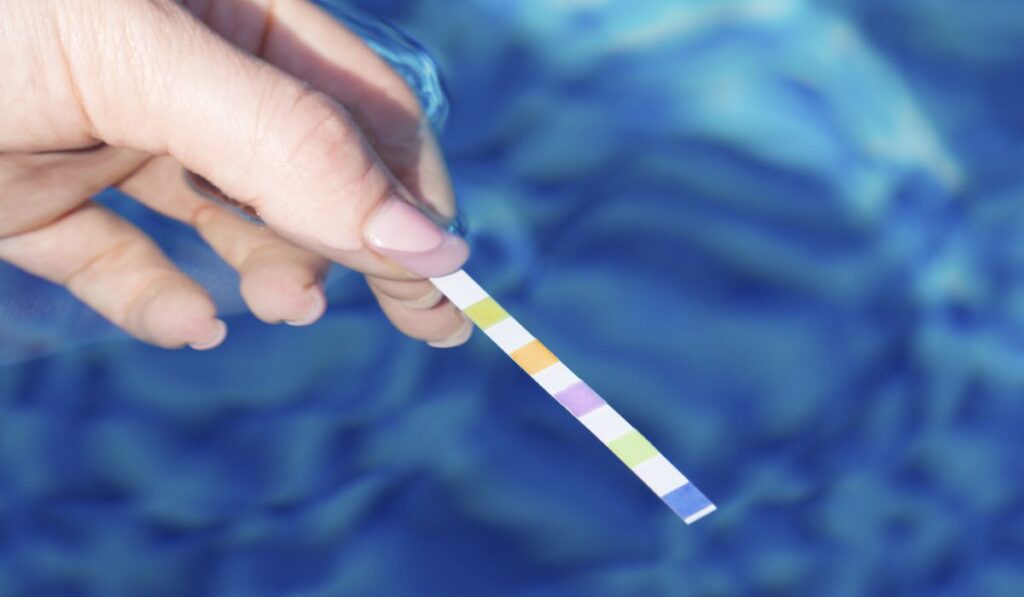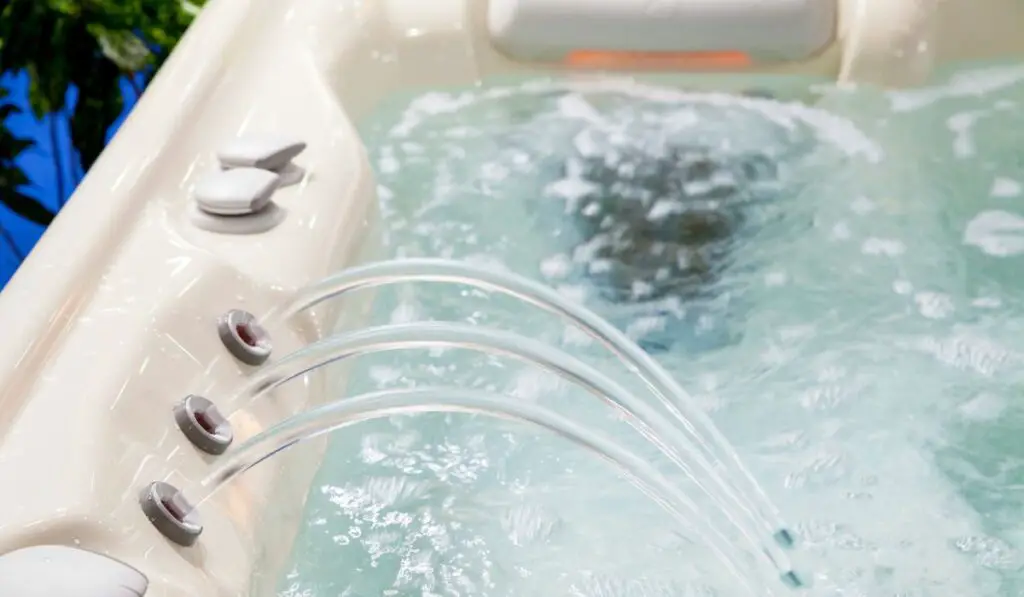Whether you’re looking to wind down after a long day or calm tense muscles, a hot tub is undeniably an amazing source of relaxation and leisure. And if you have a brand new one, you’ll want to do everything right to make it safe for you and your family to use. So, how do you start up your new hot tub?
The chemicals you need to treat your new hot tub for the first time include a sanitizer like chlorine, an alkalinity increaser, and pH controllers. You also need a calcium hardness increaser to prevent corrosion. When adding chlorine granules, aim for a level of 5 to 8 ppm.
The amount of chemicals you add to your tub depends on the gallons of water your tub can hold, so check your tub’s capacity and carefully review the spa chemical labels for the dosing information. Let’s dive into the details.
Which Chemicals Do You Need for a New Hot Tub?

You only need a few spa chemicals to keep the water clean and balanced while keeping algae and bacteria at bay.
Here’s a quick highlight of the chemicals you need to treat your new hot tub:
- A hot tub sanitizer like chlorine granules
- Alkalinity increaser
- pH decreaser and pH increaser
- Hot tub shock
- Calcium hardness increaser
Now let’s take a look at each one in more detail.
Hot Tub Sanitizer
The hot tub sanitizers you can use are chlorine, bromine, biguanide, or a saltwater system. The biggest debate, however, has always been whether to use bromine or chlorine.
Chlorine is normally an outdoor tub owner’s favorite because it’s cost-effective and easy to use. Moreover, it’s an aggressive killer of bacteria and algae. The downside of using it is that it gives off a pungent smell as it oxidizes and kills contaminants.
Experts usually recommend using chlorinating granules (on Amazon) over trichlor tablets. You can easily control the dosage with the granules, and they typically dissolve faster. On the other hand, trichlor tabs could gradually damage the acrylic shell of your hot tub.
Bromine (on Amazon) is more appropriate for indoor hot tubs or tubs that don’t get direct exposure to the sun. This is because bromine quickly becomes unstable and will break down into less effective compounds when exposed to sunlight.
The upside, however, is that bromine doesn’t give off that pungent chlorine-like smell and is gentler on skin.
Moreover, it works slowly, making it last longer than chlorine and allowing you to balance the water easily. You can either dissolve bromine tablets or add liquid bromine directly to the water.
Alkalinity Increaser, pH Decreaser & pH Increaser
Most new hot tub owners find it hard to wrap their heads around pH and total alkalinity, which appear to be closely related concepts. pH is normally used to tell how acidic your water is, and alkalinity implies how alkaline or basic the water is.
The two go hand in hand, and altering one affects the other. So, if you add chlorine to the water, it behaves like a weak acid to kill contaminants, and an alkalinity increaser will act as a buffer to balance the water.
The recommended alkalinity levels of your hot tub should range from 100 to 150 ppm (parts per million). You should also maintain the pH level within the range of 7.4 to 7.6, which is close to neutral.
If it falls below that, the water will burn your eyes, and you’ll soon be dealing with the nasty effects of corrosion in your tub.
But if the pH exceeds 7.6, the water is too alkaline and will cause itchy, dry skin and a burning sensation in your eyes. The water also becomes cloudy and it reduces the effectiveness of tub sanitizer.
You’ll need a pH decreaser like the AquaDoc pH Decreaser (on Amazon) to lower the alkalinity and prevent the water from becoming cloudy.
A pH increaser like the SpaGuard pH Increaser (on Amazon) raises the pH of your tub’s water to make it less acidic. If you go overboard with the pH increaser and your alkalinity dips too low, you can raise it with an alkalinity increaser (on Amazon).
Hot Tub Shock
Hot tub shock (on Amazon) is useful for preventing algae growth, so apply a bit of it as you start your new tub. You should then shock the tub weekly or once every two weeks to refresh your sanitizer levels and prevent algae bloom.
Experts recommend a chlorine-based hot tub shock as it’s more effective at killing algae and bacteria. Moreover, it’s more appropriate if you have a saltwater hot tub.
Calcium Hardness Increaser
The water in your hot tub needs to be slightly hard to prevent corrosion of the shell and metal piping. That’s where a calcium hardness increaser (on Amazon) comes in handy.
Your calcium hardness levels should range between 175 and 250 ppm. But if it gets higher than that, your only option is to drain the hot tub, scrub it thoroughly, and refill it with fresh, filtered water.
It’s therefore important to add the calcium hardness increaser in controlled amounts.
What to Do Before Treating Your Hot Tub
All hot tubs need regular maintenance to keep the water clean and safe for bathers. And before you treat your shiny hot tub, you’ve got to prep it well for the process. Here’s what to do:
Clean the Hot Tub Before Starting It
Properly clean all the areas of the hot tub exposed to water before you start pouring in chemicals. Use a soft towel and a non-abrasive agent to remove debris and algae from the shell and cover of your tub. Rinse the tub thoroughly to reduce foaming during the subsequent steps.
Check the Filter Condition
Most free-standing hot tubs have a cartridge filter system and a pump. You should check your hot tub cartridge filter to ensure it’s in good working condition.
Contaminants like dust, grass, body creams, fake tanning products, and makeup may clog the filter and take a toll on its performance. If you notice any signs of dirt, clean the filter to avoid contaminating the water.
Carefully Review All the Spa Chemical Labels
Before pouring any chemicals into your hot tub, carefully check all their labels to get the right dosing information. The amount of chemicals you add depends on the gallons of water your tub can hold. So check your owner’s manual for the tub’s capacity.
Test the Water

Testing the chemical composition of your tub’s water is a crucial step to keeping it clean, safe, and healthy for regular use. You’ll need to test your water before adding anything to the hot tub.
Experts recommend using test strips (on Amazon) to quickly check the pH and alkalinity levels of the water. It then becomes easy to make necessary chemical adjustments.
You can also opt for a comprehensive test kit (on Amazon) with liquid indicators for more accurate results.
Tip: Refilling, topping up, adding chemicals, and general use will affect your subsequent chemical readings.
How Much Chlorine Should You Add to a New Hot Tub?
The amount of chlorine you add to your hot tub for the first time should be 4 grams (around 1 teaspoon) for every 100 gallons of fresh water. Generally, you want to aim for a chlorine level of between 5 and 8 ppm (parts per million) for a new treatment and 2 to 4 ppm for subsequent treatments.
Whenever you start your hot tub for the first time, the free chlorine levels should be higher than what’s best for daily use.
This ensures proper startup sanitation of the water, so aim for a level of around 5 to 8 ppm and let it drop to around 3 ppm before using the tub.
Wait 30 minutes before rechecking the free chlorine level, and don’t let anyone use the hot tub during this time. Do one more test after an hour of sanitizing the tub, and that’s it.
You’ll have allowed enough time for the chlorine level to drop to the recommended level where the water is safely balanced and ready to enjoy.
How Long Should You Wait to Use a Hot Tub After Treating It?
You should wait at least 2 hours after treating a hot tub before using it. This ensures all the chemicals have completely dissolved in the water and that their levels adjusted to safe ranges.
It’s the only sure way to avoid any unpredictable chemical interactions with your skin.
Remember, some water variables, like pH, can take several hours to balance before you can test and get accurate measurements.
Therefore, experts recommend you wait 30 to 60 minutes before retesting the water to check the recommended pH and alkalinity levels.
How Often Should You Change the Water in Your Hot Tub?

You should change the water in your hot tub every 3-4 months. When you do so, be sure to remove the biofilm and debris that build up in your plumbing. Otherwise, it will continue blocking it and contaminating the water.
Use a line flush cleaner like the Spa System Flush Super-Cleaner (on Amazon) from Spa Depot. Then, drain and clean your hot tub thoroughly before refilling it with fresh water.
